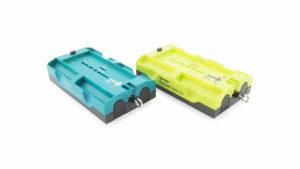To provide more students—regardless of where they may be located—with access to a quality and engaging physics education, Oregon State University kicked off its Ecampus online learning program for its introductory physics sequence last fall. This innovative program, which was designed completely for remote learning, is particularly notable because students have the opportunity to participate in collaborative, hands-on labs during these online courses.
“So many online courses are just a compilation of slides and presentations, and that goes against everything we know about how students effectively learn physics,” said David Craig, associate department head at Oregon State University. “Online education needs to have active engagement and a clear set of learning objectives for students so they know what they are learning and why.”
Re-envisioning Physics Learning
The physics team, under the leadership of senior instructor KC Walsh, completely reimagined how to structure and deliver effective online courses when it created the Ecampus offering composed of the PH 201, 202, and 203 courses. It effectively combined an evidence-based curriculum consistent with the findings of physics education research (PER), a multitude of innovative and interactive learning tools, live tutor support for students, open educational resources, discovery-based data analysis labs, and more. This included providing its distance learners with the opportunity for real-time collaboration through a state-of-the-art virtual classroom complete with green-screen video streaming. There is content sharing, real-time polling, and breakout rooms as well.
“There was a lot of research that went into creating the courses,” said Walsh. “We wanted it to be as similar to—and engaging as—the face-to-face experience as possible. This includes students preparing for a flipped classroom by watching videos and reading an open textbook. Students then attend live lectures where they are actively engaged in peer learning with the help of undergraduate learning assistants, graduate TAs, and the instructor. They even complete the same assignments as students on our main campus. The big difference is how they complete the weekly labs.”
At the beginning of the semester, each student receives a physical lab kit to use to conduct the course labs at home. Sample items in the PH 201 kits include a Go Direct® Sensor Cart, spring scale, digital scale, tape measure, pulley system, and weights. The next courses in the sequence, PH 202 and PH 203, even include equipment like gyroscopes, diffraction gratings, digital multimeters, and lasers.

“The kits provide almost everything students need for the investigations,” said Craig. “We didn’t want students to have to go and track down items, so we make the kits as complete as possible. The development team thought long and hard about the desired learning outcomes for the laboratory part of the course. We really looked at what we wanted students to do and accomplish during the labs and then found the technology and materials to facilitate that.”
“The sensor cart from Vernier is so accurate and reliable compared to similar technologies we compared it to,” he added. “This, plus the cost, was a major factor in us implementing the technology in our courses and including it in the kits.”
With the Go Direct Sensor Cart, students can explore force, position, velocity, and acceleration directly on their device through Bluetooth® wireless technology. Each cart features built-in sensors to simplify experiment setup and allow investigations to be conducted on or off a track.
During the Ecampus labs, students conduct a majority of the modules independently using the kits, and then participate in collaborative lab group work either asynchronously or synchronously, oftentimes using Zoom or Slack® collaboration software.
“The communication aspect of the program is so important,” said Christian Solorio, the graduate teaching assistant for Ecampus who provides real-time help to students performing the labs. “Being able to interpret instructions, document your work, and communicate findings are all transferable skills that will help students in their careers.”
Continuous Improvement and Innovation
Ecampus continues to grow in size and popularity at Oregon State University as the enrollment for the introductory physics sequence has surpassed more than 150 students now in its second year. To support these students, the team continues to refine and enhance the labs used during the first year to make them as strong as possible.
“Our labs allow students to partake in experimental design and data analysis, which is the real goal with physics learning,” said Walsh. “We’re continuously working to polish the labs to strengthen these inquiry-based learning opportunities and to have students participate in as much hands-on learning as possible.”
“Offering flexibility and building a classroom community is a key component of distance learners,” added Walsh. “We are able to deliver both through Ecampus while bringing physics education to students in new and innovative ways.”
About the Educators
KC Walsh
Oregon State University
Corvallis, OR
KC Walsh is an award-winning senior physics instructor and the director of Project BoxSand and the Lightboard Studio at Oregon State University. His work has been published in numerous physics publications and he is the current vice president of the Oregon American Association of Physics Teachers.
David Craig
Oregon State University
Corvallis, OR
David Craig is the associate department head at Oregon State University and an associate professor of practice. His research is focused on quantum cosmology and quantum foundations.
Christian Solorio
Oregon State University
Corvallis, OR
Christian Solorio is a graduate teaching assistant at Oregon State University. He is working to obtain his Ph.D. in Physics Education Research.


